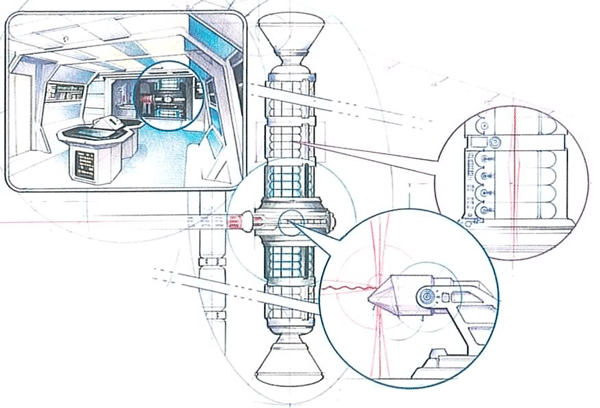

The low mass ratio of antimatter rockets enables missions which are impossible using any other propulsion technique. Such cost-optimized vehicles could have mass ratios closer to 2 than 4.9. If so, they would need less reaction mass to reach the same mission velocity. (11.18) to heat the reaction mass to a higher exhaust velocity. Depending on the relative cost of antimatter and reaction mass after they have been boosted into space, missions trying to lower costs may use more antimatter than that given by Eq. Thus, no matter what the mission, the vehicle uses 3.9 tons of reaction mass for every ton of vehicle and an insignificant amount (by mass, not cost) of antimatter. (11.18) is typically measured in milligrams. The amount of antimatter calculated from Eq. Offhand I'd say the difference between antimatter solid core, beam core, and plasma core is the conversion efficiency ( η e) and the upper limit on antimatter per second fuel consumption set by the heat resistance of the engine) (ed note: so the above equation is the important one, to figure how much antimatter fuel your spacecraft requires. We find it to be a function of the square of the mission velocity (Δ v) (essentially the mission energy), the empty vehicle's mass ( m v), and the conversion efficiency ( η e): The antimatter needed is just half of this mass. (11.15) to get the mass of the energy source ( m e). We can obtain the amount of antimatter needed for a specific mission by substituting Eq. Assuming the engine can resist being vaporized by the higher temperatures that come with the higher exhaust velocities.) (ed note: Translation: to compensate for poor efficiency of antimatter energy converted into kinetic energy you do not need more reaction mass, you just need a few more milligrams of antimatter. It starts to deviate significantly only for interstellar missions in which the mission Δ v approaches the speed of light. (11.16) implies, this constant mass ratio holds for all conceivable missions in the solar system. The amount of reaction mass needed remains constant.) If we can develop antimatter engines that can handle jets with the very high exhaust velocities Eq. (If the antimatter engine has low efficiency, we will need more antimatter to heat the reaction mass to the best exhaust velocity. Amazingly enough, this constant mass ratio is independent of the efficiency ( η e) with which the antimatter energy is converted into kinetic energy of the exhaust. Even better, if the Positron Dynamics-style moderator takes off, it could scale the process to even more positron-rich environments like linear accelerators, which create antimatter on a much larger scale.The reaction mass ( m r) is 3.9 times the vehicle mass ( m v), while the antimatter fuel mass is negligible. Inevitably, most positrons will still explode before they can make it through the trap - but if Weed can get even one in ten to survive, it would be a massive breakthrough, potentially turning antimatter into an industrial product. The lab also has a few new tricks up its sleeve, like keeping the entire system in a vacuum, so the positrons have a better chance of surviving the different layers of array without running into any electrons. Many of these tactics have been tried before, but never in exactly this combination. From there, the positrons can be pulled out of the empty spaces between the layers by a magnetic field. Flying through the array, particles will lose a little bit of heat to each one until they're cool enough to trap. Instead of a single block of neon ice, the company uses an array of 50 or more thinly sliced semiconducting solids. But the system only catches roughly one in 100 positrons, and in the 30 years it’s been in use, no one’s been able to improve on it. Right now, the best solution for cooling the positrons is running them through a block of frozen neon (called a "moderator"), which offers a minimum of stray electrons.

It’s particularly difficult because electrons are literally everywhere, floating in clouds around essentially every atom in the universe. Whenever a positron and an electron meet, they annihilate each other, which presents a serious challenge for anyone working with them. Positron Dynamics is one key player in the new wave of technology, working on an innovative method for cooling down and capturing positrons, the antimatter equivalent of the common electron. With the right funding, experts estimate we could see the dawn of the positron age in as few as five years. That progress has left us closer to workable antimatter than ever before, and parallel projects are already working on novel devices to cool and trap the particles, along with new magnetic arrays to keep them stable.


 0 kommentar(er)
0 kommentar(er)
